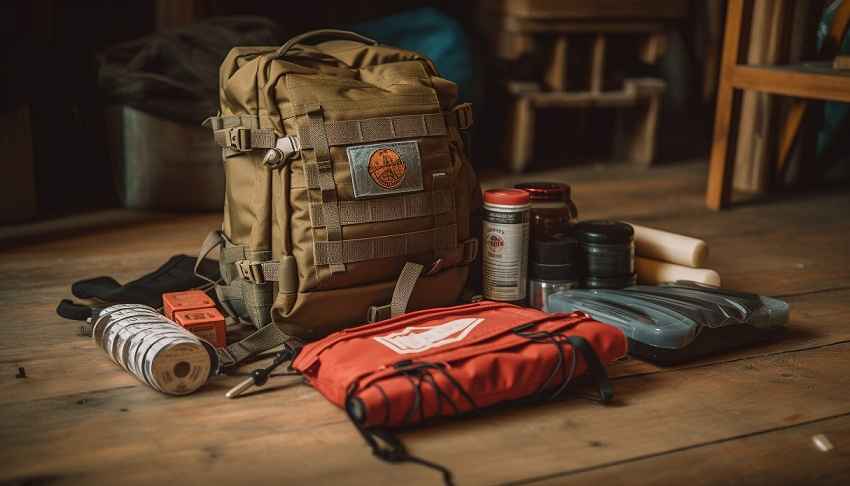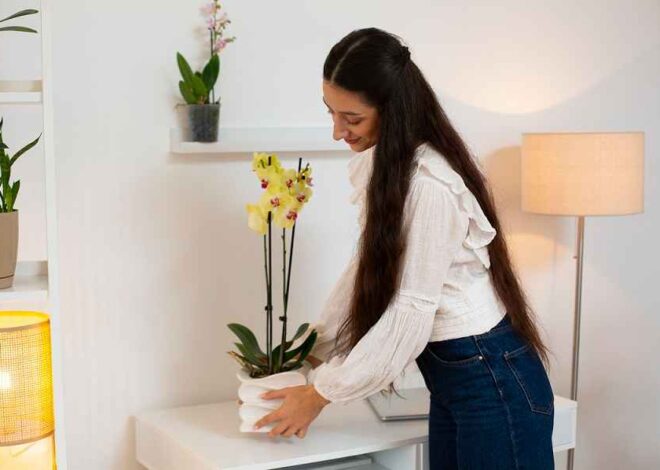
Essential Items for Your Home Emergency Kit: A Comprehensive Guide
Life is full of surprises, and not all of them are pleasant. From natural disasters to unexpected power outages, having a well-stocked emergency kit can mean the difference between chaos and calm when crisis strikes. But what exactly should you include in your home emergency kit?
Whether you’re a seasoned prepper or just starting out on your preparedness journey, our essential items checklist will empower you to face any challenge with confidence. So grab a pen and paper—let’s get ready to transform your space into a haven of safety!
Introduction: Why a Home Emergency Kit is Important
When disaster strikes, having a well-prepared home emergency kit can mean the difference between chaos and calm. Whether it’s a natural disaster, power outage, or unexpected situation, being equipped with essential supplies allows you to respond effectively. A home emergency kit is not just about survival; it’s about ensuring peace of mind for you and your loved ones during uncertain times.
Imagine facing an emergency without access to basic necessities—it’s a frightening thought. But fear doesn’t have to dictate your actions. By taking proactive steps to create a comprehensive home emergency kit, you empower yourself and those around you. Ready to learn what essentials should be in your go-to safety arsenal? Let’s dive into everything you need for your very own home emergency kit!
Assessing Your Needs: Factors to Consider When Creating a Kit
Before assembling your home emergency kit, take a moment to assess your specific needs. Every household is different, and understanding yours will ensure you’re well-prepared.
Consider the size of your family. More people mean more supplies are necessary. Think about the ages of everyone involved as well—children may require different items compared to adults or seniors.
Evaluate any medical conditions that might necessitate special provisions. If anyone in your home has allergies or chronic illnesses, include relevant medications and treatments.
Also, think about how long you might need to survive on your own. This will influence how much food and water you should pack.
Lastly, don’t forget about pets if you have them. They’ll need their own supplies too—food, water, leashes—and maybe even comfort items like toys or blankets for stress relief during emergencies.
Essential Items for Every Home Emergency Kit:
Creating a home emergency kit is crucial for safety. Start with first aid supplies. Band-aids, antiseptics, and gauze can make all the difference in minor injuries.
Next, stock up on non-perishable food and water. Canned goods, dried fruits, and bottled water are essential for sustenance during emergencies.
Flashlights should be included to provide light during power outages. Don’t forget extra batteries to keep them working when you need it most.
Emergency contact information is vital too. Keep a printed list of important numbers in case your phone dies or gets lost.
Lastly, personal hygiene items like soap, toothpaste, and feminine products ensure you can maintain cleanliness even under stress. This attention to detail will enhance your preparedness when faced with unexpected situations.
-
First Aid Supplies
First aid supplies are crucial for any home emergency kit. You never know when an accident might happen, making it essential to be prepared.
Start with adhesive bandages in various sizes. These help cover minor cuts and scrapes effectively. Include sterile gauze pads and tape for larger wounds.
Antiseptic wipes or solutions can prevent infections. They’re a must-have for cleaning injuries before applying dressings. Don’t forget pain relievers like ibuprofen or acetaminophen; they can provide relief during stressful situations.
Also, consider adding a pair of tweezers and scissors. These tools come in handy for removing splinters or cutting medical tape quickly.
Lastly, include a first aid manual or guidebook as a reference. Knowing how to use your supplies is just as important as having them on hand. Having the right first aid items ensures you’re ready for anything life throws at you.
You may also read (space heaters and generators safety tips)
-
Non-perishable Food and Water
When emergencies strike, access to food and water can become limited. That’s why including non-perishable items in your home emergency kit is crucial.
Opt for canned goods like vegetables, fruits, and proteins. They’re easy to store and require no refrigeration. Look for options with a long shelf life; these can last for years if sealed properly.
Don’t forget about dried foods such as rice, pasta, or legumes. These staples are versatile and filling when prepared correctly.
Water is equally vital. Aim for at least one gallon per person per day. Store enough to last several days because you never know how long an emergency might persist.
Consider adding hydration packs or purification tablets as well—these can help ensure clean drinking water when needed most. With the right choices in place, you’ll be better equipped to face any situation that arises without worrying about basic needs.
-
Flashlights and Batteries
When the lights go out, a reliable flashlight can be your best friend. Power outages can occur unexpectedly, and having a dependable light source is essential for safety and comfort.
Choose LED flashlights; they are energy-efficient and longer-lasting than traditional bulbs. Compact options are great for easy storage in your home emergency kit.
Don’t forget to stock up on batteries. Check the type required for your flashlights and grab extras that fit other devices as well. Having an assortment of battery sizes ensures you won’t be caught off guard when it matters most.
Consider adding headlamps to your collection too. They free up your hands during emergencies, making tasks easier while illuminating dark spaces effectively.
Remember to regularly check both flashlights and batteries in your kit. This simple step keeps everything functional when you need it the most—during those unexpected moments of crisis.
-
Emergency Contact Information
Having emergency contact information readily available is essential for any home emergency kit. This includes not only your immediate family but also trusted friends and neighbors who can assist during a crisis.
Make a list of important numbers, including local authorities, medical facilities, and poison control centers. Keep this information in an easily accessible spot within your kit.
Consider using waterproof paper or laminating the list to protect it from damage. Ensure that everyone in your household knows where to find it.
Don’t forget about pets! Include veterinary contacts as well as anyone who may help care for them in case you are unavailable.
Regularly updating these contacts ensures they remain accurate over time. A small effort now can make a significant difference when every second counts during an emergency situation.
-
Personal Hygiene Items
Maintaining personal hygiene during an emergency is crucial for both health and morale. Without access to regular facilities, having the right items can make a significant difference.
Pack antibacterial wipes to quickly clean hands and surfaces when soap and water aren’t available. These wipes are lightweight and versatile, making them easy to use on the go.
Consider including travel-sized toiletries such as toothpaste, toothbrushes, shampoo, and deodorant. They take up little space but help maintain a sense of normalcy in stressful situations.
Don’t forget about sanitary products if needed. Stocking up on feminine hygiene supplies ensures comfort during emergencies where resources may be scarce.
Lastly, include garbage bags for disposing of waste properly. Staying clean helps prevent infections or illness when you need your health most.
Additional Items to Consider:
When preparing your home emergency kit, think beyond the basics. Cash can be invaluable during a crisis when electronic payment systems may fail. Keep some small denominations on hand for quick purchases.
Important documents are essential too. Gather copies of identification, insurance policies, and medical records in a waterproof bag. This not only saves time but also eases stress if you need to evacuate quickly.
If you have pets, don’t forget their needs. Include food, water, and any medications they require. A pet first aid kit can make a significant difference in emergencies.
Tools like multi-tools or a small portable generator might prove helpful as well. These items can assist with repairs or provide power when needed.
Consider including comfort items such as blankets or games for children to alleviate anxiety during stressful times.
-
Cash and Important Documents
Having cash on hand during an emergency can be a game-changer. ATMs might not work, and credit cards could become useless in certain situations. A small stash of cash—preferably in small denominations—ensures that you can make essential purchases when needed.
In addition to cash, consider keeping copies of important documents. This includes identification like passports and driver’s licenses, insurance policies, medical records, and any legal papers relevant to your family. Keeping these items secure yet accessible is key.
Store everything in a waterproof container or folder. That way, even if disaster strikes—like flooding—you won’t lose critical information that could help you navigate the aftermath effectively.
Regularly review this section of your kit too. Update documents as necessary and replace old currency with newer bills to ensure you’re always prepared for unexpected circumstances.
-
Tools and Supplies
When crafting your home emergency kit, including essential tools and supplies is vital. These items can make a significant difference in crisis situations.
Start with a multi-tool or Swiss Army knife. This compact device combines various functions into one handy gadget, making it incredibly useful for repairs or other tasks when help isn’t readily available.
Duct tape should also be on your list. Known as the ultimate fix-it material, it can secure broken items or seal leaks temporarily.
Don’t forget about basic supplies like a whistle to signal for help and sturdy gloves to protect your hands during emergencies.
A portable phone charger could prove invaluable when power outages occur.
Lastly, having some rope or paracord ensures you’re prepared for unexpected needs such as securing items or even creating makeshift shelters if necessary.
-
Pet Supplies
When preparing your home emergency kit, don’t forget about your furry family members. Pets rely on us for their wellbeing, especially in stressful situations.
Include a supply of food that lasts for several days. Look for sealed bags or cans that are easy to store and won’t spoil quickly. Remember to pack enough water as well—hydration is crucial.
Consider including a leash, harness, and carrier if you need to evacuate quickly. These items ensure you can transport your pet safely amid chaos.
Don’t overlook any medications they might require. Having an extra supply can prevent panic during emergencies when access to veterinary care may be limited.
Lastly, bring along comfort items like a favorite blanket or toy. Familiar scents help soothe pets when everything else feels uncertain and scary.
Organization and Storage Tips for Your Kit
Keeping your home emergency kit organized can make a significant difference during a crisis. Start by choosing a sturdy, waterproof container that’s easy to carry. Clear plastic bins allow you to see the contents at a glance.
Label each section or bag within your kit. This simple step helps everyone in your household locate items quickly when time is of the essence. Use categories like “First Aid,” “Food and Water,” and “Tools.”
Consider utilizing zip-lock bags for smaller items such as batteries or personal hygiene supplies. These bags help prevent water damage and keep everything tidy.
Store your kit in an easily accessible location but away from areas prone to flooding or debris accumulation. Regularly review its placement with family members so everyone knows where it is when they need it most.
Maintaining Your Home Emergency Kit: Regularly Checking and Updating
Maintaining your home emergency kit is essential for ensuring it remains effective. Regularly checking the contents helps you identify expired items or supplies that need replenishing.
Set a schedule to review your kit, perhaps every six months. This simple practice can save you time and stress in an emergency situation.
When inspecting, look for any damage to containers and ensure everything is organized. Repackaged food should be within its shelf life, while batteries must hold their charge.
Consider seasonal changes too. For instance, if winter approaches, add extra blankets or warm clothing items.
Involve family members in this process so everyone knows where the kit is stored and how to use it effectively when needed. Keeping communication open about what’s included fosters preparedness among all household members.
Conclusion: Be Prepared, Stay Safe.
Being prepared is key to navigating unforeseen emergencies. A well-stocked home emergency kit can provide peace of mind and essential supplies during challenging times. Whether it’s a natural disaster, power outage, or other unexpected events, having your essentials ready will make all the difference.
Take the time to assess your household’s unique needs when assembling your kit. Ensure you have first aid supplies, non-perishable food and water, flashlights with batteries, important contact information, and personal hygiene items readily available. Don’t overlook additional necessities like cash and documents or even pet supplies if you’re an animal lover.
Store everything in an easily accessible location that everyone in your household knows about. Regularly check the contents of your emergency kit to replace expired items or replenish used goods.
Preparedness fosters confidence in uncertain situations—stay safe by ensuring you are ready for whatever may come your way.
You may also read (importance home safety for seniors)


